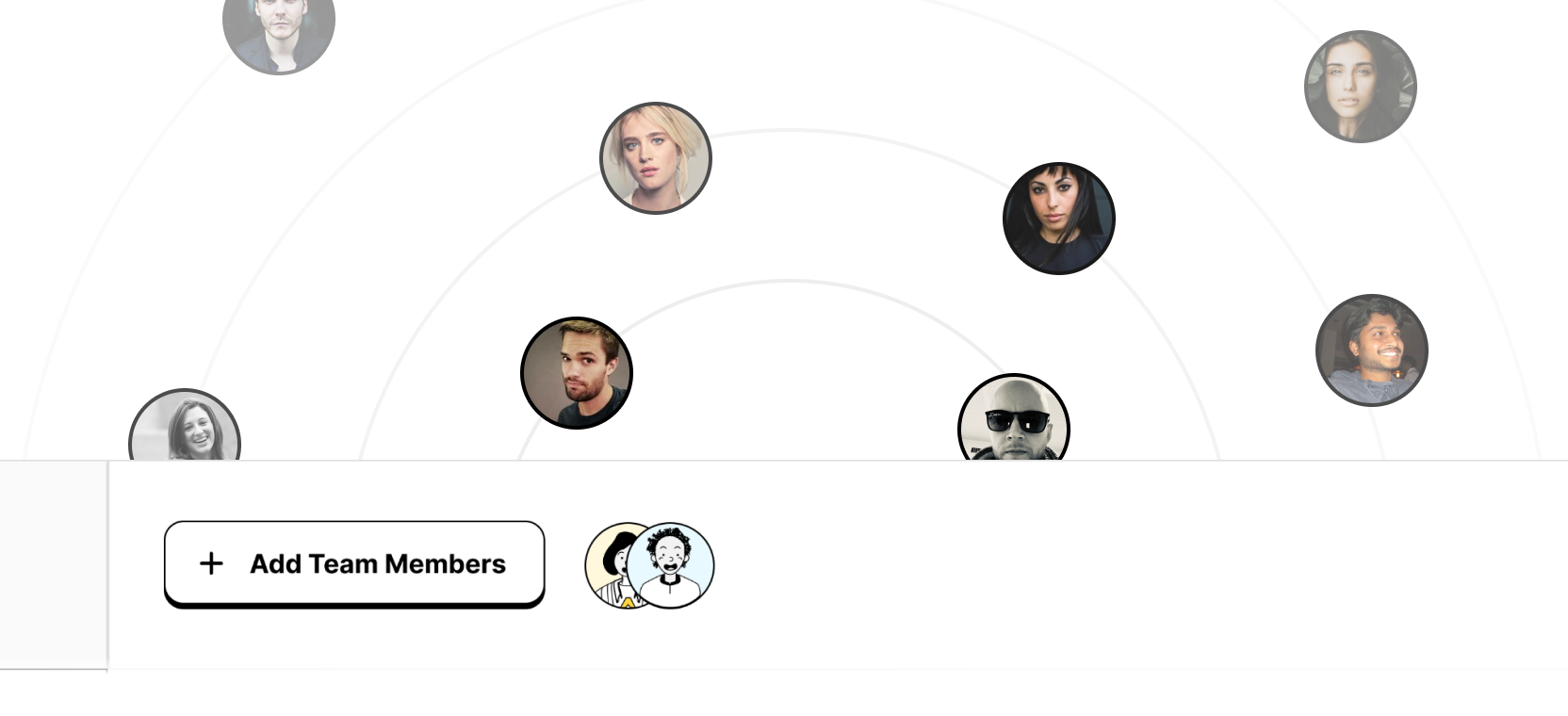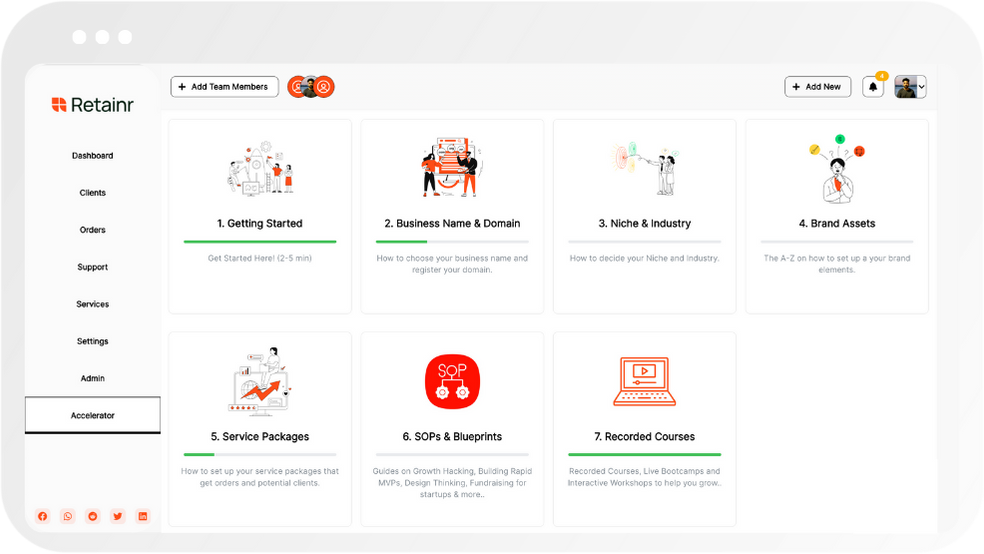
5 Common Mistakes to Avoid in SEO Optimized Descriptions
Build with Retainr
Sell your products and services, manage clients, orders, payments, automate your client onboarding and management with your own branded web application.
Get Started1. What are some common mistakes to avoid in SEO optimized descriptions?
Keyword Stuffing
One common mistake made in SEO optimized descriptions is keyword stuffing. Many business owners believe that by stuffing their content with several occurrences of a keyword, they will enhance their search engine rankings. However, this can lead to the risk of being penalized by Google because it violates their rules for providing a good user experience.
- Avoid overusing your targeted keyword(s) in your description.
- Instead, focus on creating high-quality, relevant content that naturally incorporates your keywords.
Non-unique Descriptions
A second mistake made in SEO optimized descriptions is using non-unique descriptions. When the same description is used multiple times, Google perceives it as duplicate content, and this can have a negative impact on your SEO efforts.
| Mistake | Solution |
|---|---|
| Using the same SEO descriptions multiple times | Create unique and distinct descriptions for each page |
Irrelevant Text
Another common mistake is including text that is not relevant to the page's content. This can confuse users and lead to poor conversion rates. It’s crucial to ensure that the description matches what users will find when they click on your web page.
- Do not include irrelevant text in your SEO description.
- Ensure that the description accurately represents the content found on the page.
2. How does keyword stuffing negatively impact SEO optimized descriptions?
Impact of Keyword Stuffing on SEO Optimized Descriptions
The practice of stuffing keywords into your content, known as "keyword stuffing", can have a damaging impact on SEO optimized descriptions. The primary reason is that this blatant manipulation of SEO is detected by search engine algorithms, which then proceed to penalize the website for such behavior.
- Lower Rankings: When search engines detect keyword stuffing, they respond by lowering the rankings of the website. This results in the websites losing visibility and traffic.
- Bad User Experience: Keyword stuffing makes the content look spammy and artificial, creating a poor user experience. Readers are likely to bounce back from the site, leading to a higher bounce rate which further impacts the SEO negatively.
- Penalties: Violating the webmaster guidelines from search engines like Google could lead to penalties, even to the extent of being de-indexed.
The Importance of Keyword Balance
Having a balance of keywords in a SEO optimized description is essential to avoiding these negatives impacts. Here are a few guidelines:
| Tip | Explanation |
|---|---|
| 1. Use synonyms | Instead of repeating the same keyword, consider using synonyms or closely related terms. |
| 2. Focus on Content Quality | Give priority to the value your content is delivering to users above crowding it with keywords. |
| 3. Use Long-Tail Keywords | Long-tail keywords are specific to what your target audience is searching for and help prevent stuffing. |
3. Is the length of the description important in SEO optimization?
Significance of Description Length in SEO Optimization
Yes, the length of the description plays a significant role in Search Engine Optimization (SEO). As a rule of thumb, keep your descriptions between 50-160 characters as search engines typically display this number of characters on search engine results pages. An overly long or too short description can negatively impact your SEO as it may be cut off or not provide sufficient information to attract users.
Pitfalls of Overly Long Descriptions
Creating overly lengthy descriptions is a common mistake. To avoid this:
- Keep your descriptions succinct and to the point. Avoid using unnecessary jargon or filler words.
- As much as possible, make use of active voice to sound more engaging.
- Ensure every word has value to your audience. If it's not helpful or necessary, it's better to leave it out.
While very lengthy descriptions may seem like a good idea to include more keywords or information, they can end up being counter-productive. Google and other search engines may truncate descriptions that are too long, causing vital information to be lost.
Disadvantages of Very Short Descriptions
| Issue | Consequence |
|---|---|
| Lack of Information | A very short description can leave users without enough information to understand what your page offers, which can lead to lower click-through rates. |
| Insufficient Keywords | A shorter description means less room for keywords, leaving fewer opportunities for your page to be found via search. |
In summary, both overly long and very short descriptions can be harmful to your SEO efforts. It's essential to create descriptions that are informative, engaging and within the optimal range for SEO optimization.
4. Why is it a mistake to use duplicate content in SEO optimized descriptions?
Duplicate Content in SEO Optimized Descriptions
The use of duplicate content in SEO optimized descriptions is a common mistake that can severely impact your website's performance. This practice not only frustrates visitors as they encounter the same content repeatedly, but it can also lead to significant penalties from search engines such as Google.
- Penalties from Search Engines: Search engines strive to provide unique, relevant, and fresh content to users. When they encounter duplicate content, they may penalize the website by lowering its ranking. This could lead to decreased visibility, a drop in traffic, and ultimately, a reduction in conversions and revenue.
- Lack of Unique Value: Duplicate content does not provide any unique value to users. It could result in a high bounce rate (people leaving the site without interacting further), as the same information is available elsewhere on your site.
- Wasted Crawl Budget: Crawl Budget refers to the number of pages a search engine will crawl on your site within a certain timeframe. Duplicate content wastes this budget, as search engines end up crawling the same content repeatedly, leaving less time for new or updated content.
Let's further highlight these impacts in a table:
| Impact of Duplicate Content | Consequence |
|---|---|
| Penalties from Search Engines | Decreased ranking, visibility, web traffic, and conversions |
| Lack of Unique Value | Increased bounce rate |
| Wasted Crawl Budget | Less time for new/updated content to be crawled |
As we can see, to maintain strong SEO practice, it is integral to avoid duplicate content in SEO optimized descriptions. Always ensure your content is unique, valuable, and relevant to avoid these issues and optimize your site's performance and ranking.
5. How does unoptimized metadata affect SEO optimized descriptions?
Understanding the Impact of Unoptimized Metadata
Metadata, which includes elements like Meta Titles and Meta Descriptions, are a fundamental aspect of SEO. Unoptimized metadata can significantly impact your SEO-optimized descriptions in several negative ways.
- Poor Rankings: Search engines use metadata to understand the content of your page and rank it accordingly. If your metadata is not optimized for relevant keywords and search terms, it's unlikely that your website will rank high in search engine results pages (SERPs).
- Decreased Click-Through Rate (CTR): When your page appears in the SERP, users see your Meta Title and Description. If these aren't compelling or related to their search, they're less likely to click on your link.
- Low User Engagement: Poorly optimized metadata can lead to low user engagement. If the metadata does not accurately represent the content, users may quickly leave your page, increasing your bounce rate.
Necessity of Metadata Optimization
Clearly, avoiding these common pitfalls associated with unoptimized metadata is crucial for effective SEO. To develop compelling, optimized metadata, consider the following strategies:
| Strategy | Description |
|---|---|
| Keyword Research | Identify and incorporate relevant keywords into your metadata to improve search engine rankings. |
| Enticing Descriptions | Write engaging, informative descriptions to attract users and drive click-through rates. |
| Accurate Representation | Ensure your metadata accurately represents the content on your page to decrease bounce rates and, over time, improve your SEO. |
Avoiding Mistakes in Metadata Optimization
In summary, the potential negative effects of unoptimized metadata on SEO-optimized descriptions underline the importance of careful, deliberate metadata optimization. By using relevant keywords, crafting compelling descriptions, and accurately representing your page's content, you should be able to avoid these pitfalls and maximize your SEO performance.
6. What is the impact of neglecting mobile users when creating SEO optimized descriptions?
The Significance of Mobile Users in SEO Optimized Descriptions
Living in a digital era, where smartphones are a staple gadget in everyone's daily life, having a mobile-friendly website is crucial. When SEO optimized descriptions are built, it is significant to consider mobile users, as Google favors mobile-friendly websites. Ignoring this aspect might lead to several unfavorable scenarios.
Impacts on Rankings and Traffic
- Lower Rankings: Google has shifted to mobile-first indexing. This means Google predominantly uses the mobile version of the content for indexing and ranking. So, neglecting mobile users during SEO can hurt your site rankings, which in turn affects visibility.
- Decrease in Traffic: With lower rankings, the chances of attracting organic traffic reduce. Most users rely on mobile devices for internet access, hence sites not optimized for mobile can miss out on a significant amount of traffic.
- Affect User Experience: Not all elements on a desktop website scale down well on mobile devices. If your descriptions are not optimized for mobile users, it could affect the overall user experience leading to higher bounce rates.
Metrics Comparison Table
| Metrics | Mobile Optimized | Not Mobile Optimized |
|---|---|---|
| Google Rankings | Higher | Lower |
| Organic Traffic | Increases | Decreases |
| User Experience | Enhanced | Compromised |
| Bounce Rates | Lower | Higher |
7. How does irrelevant keyword inclusion affect the effectiveness of SEO optimized descriptions?
Understanding Irrelevant Keyword Inclusion
The inclusion of irrelevant keywords in SEO optimized descriptions is a common mistake that can adversely impact the effectiveness of your overall SEO strategy. When search engines crawl through your website, they look for consistency and relevancy in your content. Including keywords that are not directly related to your content, just in the hopes of driving more traffic, can lead to a poor user experience, damage your site’s reputation, and ultimately result in lower rankings on search engine results pages (SERPs).
Effects of Irrelevant Keyword inclusion
- Reduced User Engagement: Users visiting your site with certain expectations based on their search query will quickly leave if they find the content irrelevant, increasing your site's bounce rate.
- Penalties from Search Engines: Search engines like Google have sophisticated algorithms that can detect keyword stuffing or including irrelevant keywords. These unethical SEO practices can lead to penalties on your search engine rankings.
- Damage to your site's reputation: Irrelevant keyword inclusion can cause confusion and decrease your site's credibility among users and eventually reduce organic traffic.
Tips to Avoid Irrelevant Keyword Inclusion
| Tip | Description |
|---|---|
| Relevance | Always make sure the keywords you include in the description are relevant to the content on the page. |
| Research | Invest time in comprehensive keyword research before deciding on the ones to include in your SEO optimized descriptions. |
| Quality over Quantity | Instead of stuffing your description with numerous keywords, focus on using a few high quality and highly relevant keywords. |
8. Why is it important to avoid using complex jargon and language in SEO optimized descriptions?
Understanding the Role of Simplicity in SEO Descriptions
There's no doubt that SEO-optimized descriptions play a crucial role in driving traffic to a website. However, it becomes counter-productive when these descriptions are filled with complex jargon and advanced language. A broad audience, including novices in the discussed subject matter, needs to understand descriptions. Therefore, keeping the descriptions straightforward and free from complicated language is vital.
Mistakes in SEO due to Complex Language Usage
- Decreased User Engagement: Users get discouraged when they come across content that they can't comprehend quickly. This leads to a decrease in engagement and interaction with a website.
- Bounce Rate Increase: High bounce rates result from users leaving a website swiftly. They tend to do this when the site's content is overly complicated or difficult to understand.
- Lower Search Ranking: Google and other search engines prefer user-friendly language. This means that complicated descriptions can lead to a decrease in a site's search rankings.
Focusing on Simple Language for SEO Success
To avoid these issues and maintain a robust SEO strategy, focus should be on simple language. There's no need for technical terms and industry-jargon that could confuse your audience. On top of this, Google’s algorithms have developed to understand and reward content that's easily accessible to the reader. To illustrate further, consider the following table:
| Metric | Simple Language | Complex Language |
|---|---|---|
| User Engagement | High | Low |
| Bounce Rate | Low | High |
| Search Ranking | High | Low |
As the table depicts, using simple language in SEO descriptions can boost user engagement and search rankings, while decreasing bounce rates - all leading to improved overall SEO performance.
9. How does a lack of call to action in the description affect SEO optimization efforts?
Importance of Call to Action in SEO Optimized Description
Call to Action (CTA) is an essential element in a SEO optimized description that prompts users to engage or take a particular action. It aims to persuade a potential customer to click through, purchase, subscribe or respond in some other kind of action. When a description lacks a CTA, there are several ways it can negatively impact your SEO efforts.
Common consequences of not including a CTA in your descriptions include:
- Reduced Click-Through-Rate: CTA encourages users to click on your link. Lack of it might lead to low CTR which is a key metric in SEO ranking.
- Low Conversion Rate: CTA is a driving force behind user conversion. Without it, users may not know the action you want them to take, leading to reduced conversions.
- Decreased User Engagement: CTA often leads to increased user engagement. Absence of it might lead to poor engagement causing a higher bounce rate which negatively impacts SEO.
Effective Practices for Using CTAs in Descriptions
| Practice | Description |
|---|---|
| Clarity | CTAs should be clear and convey exactly what action you want the user to take. |
| Positioning | CTAs should be positioned well in your description where users can easily find them. |
| Urgency | Creating a sense of urgency in your CTA can encourage users to take immediate action. |
| Use of Persuasive Language | Using strong, persuasive words could significantly increase the effectiveness of your CTAs. |
In conclusion, lacking a call to action in your SEO optimized description significantly hampers your SEO efforts by decreasing user engagement, conversion rates, and click-through rates. However, by incorporating clear and persuasive CTAs, you can overcome these hurdles and vastly improve your SEO.
10. What should be the focus when creating an SEO optimized description to avoid common mistakes?
Understand the Importance of Keywords
One of the common mistakes many people make when creating SEO optimized descriptions is neglecting the importance of keywords. Keywords play a crucial role in driving targeted traffic to your website, thereby increasing your online visibility. However, it's crucial to ensure that these keywords are relevant to your content, easy to understand, and used in moderation to avoid keyword stuffing. Choosing and utilizing the right keywords should be a focus when writing your SEO descriptions.
- Use long-tail keywords that are more specific to your product or service
- Make use of keyword tools to find the most relevant keywords
- Include the keywords in the title, meta description, and content body
Concentrate on Readability and User Engagement
Another key factor to consider when writing your SEO optimized descriptions is readability and user engagement. Remember that, at the end of the day, the main goal is not just to rank high on search engines but also to attract and engage your audience. Thus, your descriptions must be informative, engaging, and easy to read.
| Do | Don't |
|---|---|
| Use short paragraphs and bullet points for easy reading | Don't use complicated terminologies and jargons |
| Make your description enticing to click-through | Don't make false promises or use click-bait |
Focus on Unique and Relevant Descriptions
Lastly, it is crucial to focus on creating unique and relevant descriptions. Using duplicate or irrelevant descriptions can harm your SEO and user experience. It is always crucial to create a unique description for every page of your website, as this not only improves your SEO but also provides value to your audience.
- Create descriptive titles and descriptions that reflect the content of the page
- Do not duplicate titles or descriptions across different pages
- Avoid generic descriptions and aim for specificity
Conclusion
Mistake 1: Overstuffing Keywords
Search engines penalize websites that overuse keywords in their SEO descriptions. They interpret this as an attempt to manipulate rankings and typically devalue the content, resulting in lower rankings. Consider using www.retainr.io software to manage and maintain an optimum level of keyword use.
Mistake 2: Making Descriptions Too Lengthy
When it comes to SEO descriptions, the saying 'less is more' really applies. Search engines like Google usually truncate descriptions that are too long, making them less effective. To ensure optimal length, use Retainr.io's tools to manage and monitor this aspect.
Mistake 3: Ignoring Geo-targeting
Not including geo-targeted information in your SEO descriptions can be a lost opportunity, especially for small, local businesses. Retainr.io software can provide effective tools for integrating geo-tagging into your SEO strategies.
Mistake 4: No Call-to-Action (CTA)
Not prompting your audience adequately can lead to lower click-through rates. To avoid this, ensure every SEO description has a clear CTA. Retainr.io can help you create compelling CTAs to encourage higher engagement.
Mistake 5: Ignoring Customer Behavior Models
Using generic SEO descriptions without considering customer behavior can lead to ineffective outcomes. By using www.retainr.io software, you can understand client behavior patterns and tailor your SEO descriptions accordingly, maximizing results.
Avoid the above common SEO mistakes with the help of Retainr.io and improve your business’s rank on search engines. It’s a white label software that allows you to sell, manage clients, orders, and payments with your own branded app.
Boost Your Agency Growth
with Retainr Accelerator
Uncover secrets, strategies, and exclusive blueprints to take your agency's growth to the next level — from marketing insights to effective presentations and leveraging technology.

SOPs, Cheatsheets & Blueprints
Leverage 50+ SOPs (valued over $10K) offering practical guides, scripts, tools, hacks, templates, and cheat sheets to fast-track your startup's growth.
Connect with fellow entrepreneurs, share experiences, and get expert insights within our exclusive Facebook community.
.jpg)

Join a thriving community of growth hackers. Network, collaborate, and learn from like-minded entrepreneurs on a lifelong journey to success.

Gain expertise with recorded Courses, Live Bootcamps and interactive Workshops on topics like growth hacking, copywriting, no-code funnel building, performance marketing and more, taught by seasoned coaches & industry experts.

.jpg)

.jpeg)


